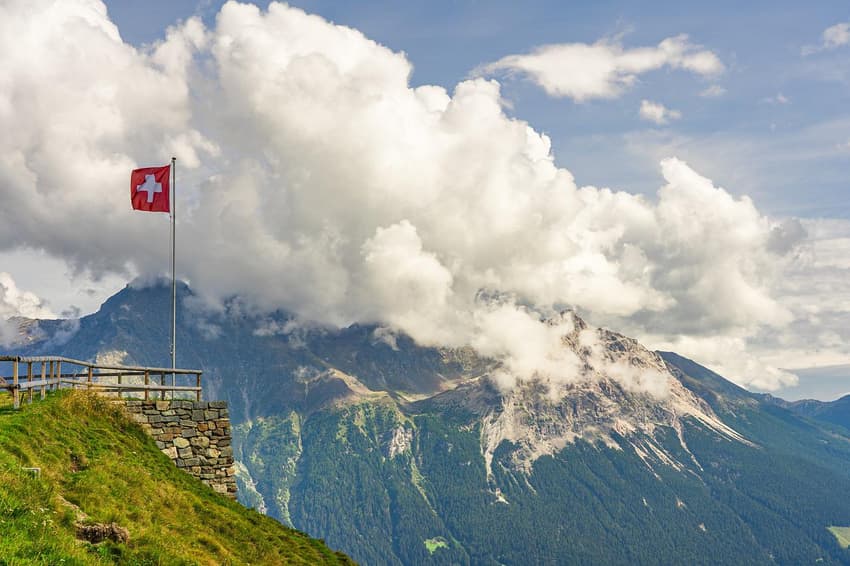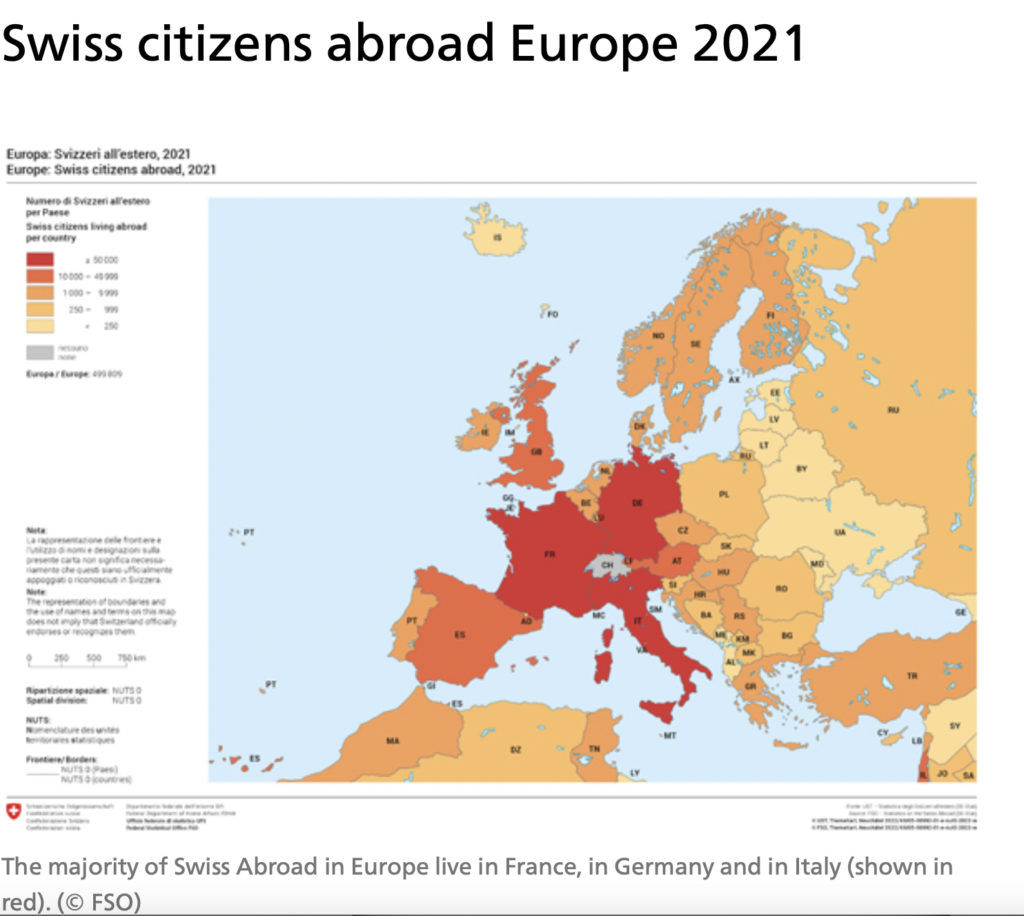EXPLAINED: What are the 'five Switzerlands' and what do they represent?

If you think you know all the basic facts about this country, you may be surprised about this one: the Swiss population is composed of five distinct, yet inter-related, parts.
In announcing on Monday that Switzerland will launch its new passport on October 31st, the government said the updated version will include a page for “the fifth Switzerland”, alongside the existing pages featuring the 26 cantons.
But what are the four Switzerlands already featured in the passport?
If you think about it, it makes perfect sense — each of the four parts represents Switzerland’s linguistic regions: German, French, Italian and Romansh. (Sorry, English is not one of them)
Following this system, the German-speaking part, mostly located in the east, north and centre of the country, is geographically and demographically the largest, so it has the title of “first Switzerland”.
Over 60 percent of the Swiss population speak German as their main language, according to government data. Officials hasten to add that these people “do not speak standard German but rather various Alemmanic dialects collectively called Swiss German".
Next, the “second” Switzerland are the French speakers in the west of the country who, at 20 percent, constitute the second-largest linguistic group.
Italian-speakers (8 percent) are the “third” group, concentrated primarily in the southern canton of Ticino.
The fourth are Romansh speakers in Graubünden, the tiniest group, with only less than 1 percent of residents still speaking this ancient language.
READ MORE: 18 interesting facts about Romansh, Switzerland’s fourth official language
But the geographical lines are not tightly wound around the linguistic regions: “four of Switzerland's 26 cantons are officially multilingual”, the government says.
“Both French and German are spoken in the cantons of Bern, Fribourg and Valais. The cities of Biel and Fribourg are also bilingual. In the canton of Graubünden, three languages are spoken: German, Romansh and Italian, depending on the proximity to neighbouring linguistic regions".
This multi-linguism is such an important part of Switzerland’s culture and national identity that it is enshrined in law. It is governed by the Languages Act, which ensures respect for each of the four language communities. It also stipulates that "each language group has the right to communicate in its own language. All official federal documents (legislation, reports, websites, brochures and building signage) must appear in German, French and Italian".
As for Romansh, while it is an official language of Switzerland as well, the government uses it only when communicating with Romansh speakers.
READ MORE: How did Switzerland become a country with four languages?
Those are the “four Switzerlands”, what about the fifth?
This group, which will be newly included in the updated passport, are Swiss nationals living abroad, sometimes also referred to as the ’27th canton’.
Currently, about 11 percent of Swiss citizens — approximately 788, 000 people — live outside the country, mostly in France, Germany, and Italy.
This chart from the Federal Statistical Office shows where most of the “fifth Switzerland” lives.

And this article explains how the Swiss who left their country view Switzerland from abroad:
‘Switzerland works’: What Swiss nationals living abroad miss about home
Comments
See Also
In announcing on Monday that Switzerland will launch its new passport on October 31st, the government said the updated version will include a page for “the fifth Switzerland”, alongside the existing pages featuring the 26 cantons.
But what are the four Switzerlands already featured in the passport?
If you think about it, it makes perfect sense — each of the four parts represents Switzerland’s linguistic regions: German, French, Italian and Romansh. (Sorry, English is not one of them)
Following this system, the German-speaking part, mostly located in the east, north and centre of the country, is geographically and demographically the largest, so it has the title of “first Switzerland”.
Over 60 percent of the Swiss population speak German as their main language, according to government data. Officials hasten to add that these people “do not speak standard German but rather various Alemmanic dialects collectively called Swiss German".
Next, the “second” Switzerland are the French speakers in the west of the country who, at 20 percent, constitute the second-largest linguistic group.
Italian-speakers (8 percent) are the “third” group, concentrated primarily in the southern canton of Ticino.
The fourth are Romansh speakers in Graubünden, the tiniest group, with only less than 1 percent of residents still speaking this ancient language.
READ MORE: 18 interesting facts about Romansh, Switzerland’s fourth official language
But the geographical lines are not tightly wound around the linguistic regions: “four of Switzerland's 26 cantons are officially multilingual”, the government says.
“Both French and German are spoken in the cantons of Bern, Fribourg and Valais. The cities of Biel and Fribourg are also bilingual. In the canton of Graubünden, three languages are spoken: German, Romansh and Italian, depending on the proximity to neighbouring linguistic regions".
This multi-linguism is such an important part of Switzerland’s culture and national identity that it is enshrined in law. It is governed by the Languages Act, which ensures respect for each of the four language communities. It also stipulates that "each language group has the right to communicate in its own language. All official federal documents (legislation, reports, websites, brochures and building signage) must appear in German, French and Italian".
As for Romansh, while it is an official language of Switzerland as well, the government uses it only when communicating with Romansh speakers.
READ MORE: How did Switzerland become a country with four languages?
Those are the “four Switzerlands”, what about the fifth?
This group, which will be newly included in the updated passport, are Swiss nationals living abroad, sometimes also referred to as the ’27th canton’.
Currently, about 11 percent of Swiss citizens — approximately 788, 000 people — live outside the country, mostly in France, Germany, and Italy.
This chart from the Federal Statistical Office shows where most of the “fifth Switzerland” lives.

And this article explains how the Swiss who left their country view Switzerland from abroad:
‘Switzerland works’: What Swiss nationals living abroad miss about home
Join the conversation in our comments section below. Share your own views and experience and if you have a question or suggestion for our journalists then email us at [email protected].
Please keep comments civil, constructive and on topic – and make sure to read our terms of use before getting involved.
Please log in here to leave a comment.